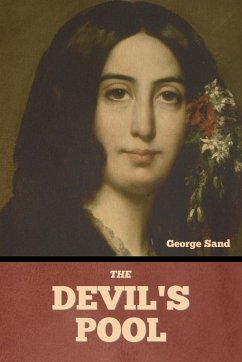La Mare au Diable (The Devil's Pool) is an 1846 novel by George Sand. The novel is first in a series of four pastoral novels by Sand, based on her childhood; it was followed by François le Champi (1847-1848), La Petite Fadette (1849), and Les Beaux Messieurs de Bois-Doré (1857). The novel (specifically, its opening scene) is supposed to have been the inspiration for Rosa Bonheur's 1849 painting Ploughing in the Nivernais. A contrasexual, queer reading of the novel was offered by James Hamilton, who suggested that, rather than see Germain as a projection of a male author, Marie could profitably be regarded as an ego-heroine; according to Hamilton, such a reading offers a better explanation of the title (and its explicit reference to a female element, water) and greater depth for Marie's two suitors. (wikipedia.org) About the author Amantine Lucile Aurore Dupin de Francueil (1 July 1804 - 8 June 1876), best known by her pen name George Sand was a French novelist, memoirist and journalist. One of the most popular writers in Europe in her lifetime, being more renowned than either Victor Hugo or Honoré de Balzac in England in the 1830s and 1840s, Sand is recognised as one of the most notable writers of the European Romantic era, with more than 50 volumes of various works to her credit, including tales, plays and political texts, alongside her 70 novels. Like her great-grandmother, Louise Dupin, whom she admired, George Sand stood up for women, advocated passion, castigated marriage and fought against the prejudices of a conservative society. Sand's first literary efforts were collaborations with the writer Jules Sandeau. They published several stories together, signing them Jules Sand. Sand's first published novel Rose et Blanche (1831) was written in collaboration with Sandeau. She subsequently adopted, for her first independent novel, Indiana (1832), the pen name that made her famous - George Sand. By the age of 27, Sand was Europe's most popular writer of either gender, more popular than both Victor Hugo and Honoré de Balzac in England in the 1830s and 1840s, and she remained immensely popular as a writer throughout her lifetime and long after her death. Early in her career, her work was in high demand; by 1836, the first of several compendia of her writings was published in 24 volumes. In total, four separate editions of her "Complete Works" were published during her lifetime. In 1880, her children sold the rights to her literary estate for 125,000 Francs (equivalent to 36 kg worth of gold, or 1.3 million dollars in 2015 USD). ... (wikipedia.org)
Hinweis: Dieser Artikel kann nur an eine deutsche Lieferadresse ausgeliefert werden.
Hinweis: Dieser Artikel kann nur an eine deutsche Lieferadresse ausgeliefert werden.









